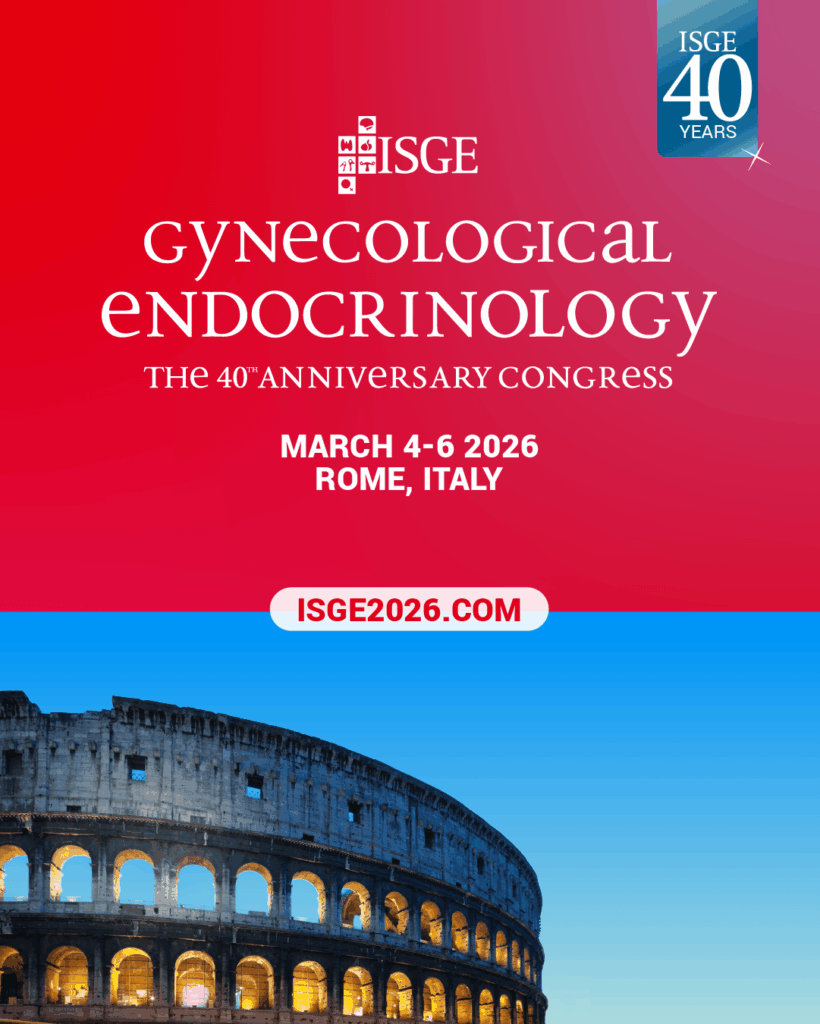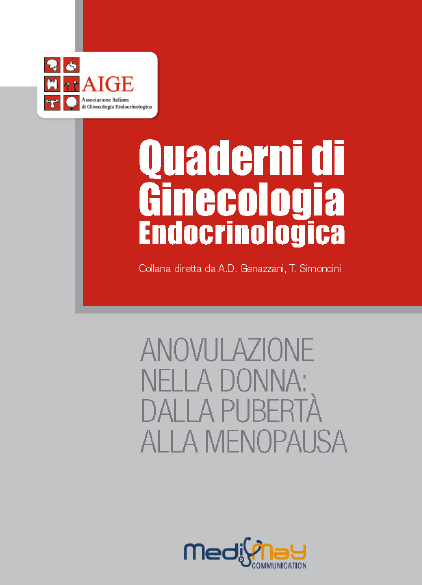-
Vittorio Unfer, Fabio Facchinetti, Beatrice Orrù, Barbara Giordani, John Nestler
Myo-inositol effects in women with PCOS: a meta-analysis of randomized controlled trials
Endocrine Connections (2017) 6, 647–658.
Download
Abstract
Myo-inositol (MI) supplementation in women with polycystic ovary syndrome (PCOS) has been evaluated over the last years. Many hormonal and reproductive impairments associated with this disorder seem relieved by the supplement. The objective of the meta-analysis was to assess the effects of MI alone or combined with d-chiro-inositol (DCI) on the endocrine and metabolic abnormalities of women with PCOS. Literature was retrieved from selected databases, MEDLINE, EMBASE, PubMed and Research Gate (up to November 2016). Only randomized controlled trials (RCTs) investigating the effects of MI alone or combined with DCI were reviewed. Nine RCTs involving 247 cases and 249 controls were included. Significant decreases in fasting insulin (SMD = −1.021 μU/mL, 95% CI: −1.791 to −0.251, P = 0.009) and homeostasis model assessment (HOMA) index (SMD = −0.585, 95% CI: −1.145 to −0.025, P = 0.041) were identified after MI supplementation. The trial sequential analysis of insulin meta-analysis illustrates that the cumulative z-curve crossed the monitoring boundary, providing firm evidence of the intervention effect. A slight trend toward a reduction of testosterone concentration by MI with respect to controls was found (SMD = −0.49, 95% CI: −1.072 to 0.092, P = 0.099), whereas androstenedione levels remained unaffected. Throughout a subgroup’s meta-analysis, a significant increase in serum SHBG was observed only in those studies where MI was administered for at least 24 weeks (SMD = 0.425 nmol/L, 95% CI: 0.050–0.801, P = 0.026). These results highlight the beneficial effect of MI in improving the metabolic profile of women with PCOS, concomitantly reducing their hyperandrogenism.
-
Tasuku Harada, Saori Kosaka, Joerg Elliesen, Masanobu Yasuda, Makoto Ito, Mikio Momoeda
Ethinylestradiol 20 mg/drospirenone 3 mg in a flexible extended regimen for the management of endometriosis-associated pelvic pain: a randomized controlled trial
Fertil Steril 2017;108:798–805
Download
Abstract
Objective: To investigate the efficacy and safety of ethinylestradiol 20 mg/drospirenone 3 mg in a flexible extended regimen (FlexibleMIB) compared with placebo to treat endometriosis-associated pelvic pain (EAPP).
Design: A phase 3, randomized, double-blind, placebo-controlled, parallel-group study, consisting of a 24-week double-blind treatment phase followed by a 28-week open-label extension phase with an unblinded reference arm.
Setting: Thirty-two centers.
Patient(s): A total of 312 patients with endometriosis.
Intervention(s): Patients were randomized to FlexibleMIB, placebo, or dienogest. The FlexibleMIB and placebo arms received 1 tablet per day continuously for 120 days, with a 4-day tablet-free interval either after 120 days or after R3 consecutive days of spotting and/or bleeding on days 25–120. After 24 weeks, placebo recipients were changed to FlexibleMIB. Patients randomized to dienogest received 2 mg/d for 52 weeks in an unblinded reference arm.
Main Outcome Measure(s): Absolute change in the most severe EAPP based on visual analog scale scores from the baseline observation phase to the end of the double-blind treatment phase.
Result(s): Compared with placebo, FlexibleMIB significantly reduced the most severe EAPP (mean difference in visual analog scale score: -26.3 mm). FlexibleMIB also improved other endometriosis-associated pain and gynecologic findings and reduced the size of endometriomas.
Conclusion(s): FlexibleMIB improved EAPP and was well tolerated, suggesting it may be a new alternative for managing endometriosis
-
Yaqiong Zhou, Xiaoyun Wang, Yongrong Jiang, Honglan Ma, Li Chen, Chenglin Lai, Chunrong Peng, Caiyun He, Chaofeng Sun
Association between polycystic ovary syndrome and the risk of stroke and all-cause mortality: insights from a meta-analysis
Gynecol Endocrinol 33:904-910, 2017.
Abstract
Many epidemiologic literatures have investigated the link between PCOS and long-term stroke risk and all-cause mortality, but the results are surprisingly conflicting. A meta-analysis was performed to examine the link between polycystic ovary syndrome (PCOS) and the risk of stroke, death from any cause, and assessed whether BMI might explain a higher risk of stroke. We searched the PUBMED, EMBASE, and Cochrane Library databases with no restrictions. Nine Cohort studies were identified, involving a total of 237,647 subjects. Compared with those without PCOS, subjects with PCOS were significantly associated with a increased risk of developing stroke (OR = 1.36; 95% CI 1.09–1.70; p = .007). However, no significant association was observed between PCOS and all-cause death (OR = 1.21; 95% CI 0.88–1.66; p = .25). Moreover, after pooling the five studies with risk estimates adjusted for BMI, the association between PCOS and stroke was slightly attenuated, although the odds ratios did not reach statistical significance (OR = 1.24; 95% CI 0.98–1.59). In conclusion, PCOS is associated with significant increased risk for stroke, while there is no consistent evidence to indicate that PCOS influences all-cause death outcomes. Increased BMI is an important contributor to the relationship between PCOS and stroke risk. Further study is needed to clarify which subgroups of subjects with the PCOS are at higher risk for stroke and should focus on developing reliable device for risk stratification.
-
Ekachai Leeangkoonsathian, Tawiwan Pantasri, Somsak Chaovisitseree, Nuntana Morakot
The effect of different progestogens on sleep in postmenopausal women: a randomized trial
Gynecol Endocrinol 33: 933–936, 2017
Abstract
Background: While progesterone affects sleep, different types of it might affect sleep differently.
Methods: One hundred Thai women, who complained of insomnia, visited the Menopause Clinic at Maharaj Nakorn Chiang Mai Hospital, Chiang Mai, Thailand from February 2014 to March 2015, and were divided randomly into two groups. Both groups received daily hormonal treatment that included estradiol valerate (progynova) at 1mg. The first group also received dydrogesterone (duphastonVR) at 10mg and the second group micronized progesterone (utrogestranVR ) at 100mg. The clinical symptoms and Pittsburgh Sleep Quality Index (PSQI) were recorded for three consecutive months after treatment. This study was registered with clinicaltrial.gov (code number NCT02086032).
Results: Sleep quality improved in both groups (10.52 ± 4.27 to 4.91 ± 3.15 in the dydrogesterone group and 10.16 ± 3.60 to 6.27 ± 3.04 in the micronized progesterone group, p value 0.08). Women in the micronized progesterone group had fewer overall side effects than those in the dydrogesterone group.
Conclusion: Sleep quality of peri-postmenopausal women with insomnia improved dramatically after the
first month of hormonal treatment. However, more participating patients are necessary to ascertain the
differences in sleep quality from dydrogesterone and micronized progesterone treatment.
-
Manuela Neri, Maria Elena Malune, Valentina Corda, Bruno Piras, Pierina Zedda, Monica Pilloni, Maria Paola Orani, Valerio Vallerino, Gian Benedetto Melis, Anna Maria Paoletti
Body composition and psychological improvement in healthy premenopausal women assuming the oral contraceptive containing micronized estradiol (E2) and nomegestrol acetate (NOMAC)
Gynecol Endocrinol 33: 958-962, 2017
Download
Abstract
This observational study was conducted in healthy premenopausal women, who presented themselves for contraceptive advice at the outpatient Family Planning Clinics of the Department of Obstetrics and Gynecology of the University of Cagliari, Hospital–University of Cagliari (Italy). After a screening period of three menstrual cycles, 48 women without contraindications to estroprogestin contraceptives (OCs) were included in the study. The primary purposes of the study were to evaluate whether a 12-month-treatment with the combined OC containing micronized estradiol (1.5 mg, E2) plus nomegestrol acetate (2.5 mg, NOMAC) (E2/NOMAC) interfere on anthropometric indices (AI), body composition (BC) and psychological status (PS). In subjects with dysmenorrhea (#36), its intensity was evaluated using the visuo analogic scale (VAS), both before and during the 12-month-treatment with E2/NOMAC. E2/NOMAC did not modify neither AI nor BC in the 40 subjects who concluded the study. The PS and the VAS of dysmenorrhea were significantly (p < 0.0001) improved from the first cycle of treatment and throughout the E2/NOMAC treatment in comparison with basal values. The study suggests that E2/NOMAC is devoid of negative effects on AI and BC, with additional benefits on PS and dysmenorrhea
-
D. Pu, R. Tan, Q. Yu & J. Wu
Metabolic syndrome in menopause and associated factors: a meta-analysis
Climateric 20: 583–591, 2017
Download
Abstract
Objective: Metabolic syndrome (MetS) is a cluster of risk factors for cardiovascular disease and diabetes. Menopause is associated with an increased risk for MetS. The purpose of this meta-analysis is to better understand the relationship between MetS and menopause.
Methods: MEDLINE and EMBASE were searched for all the associated articles on (1) MetS components in postmenopausal women vs. premenopausal women, (2) comparison of MetS incidence between surgical menopause and natural menopause, (3) the effect of hormone therapy (HT) with 17b-estradiol (E2) compared to conjugated equine estrogen (CEE) on MetS components among postmenopausal women. A meta-analysis was applied by Review Manager 5.3 software.
Results: All comparable indicators were significantly unfavorably changed in postmenopausal women compared to premenopausal women except for high density lipoprotein cholesterol. Women who underwent surgical menopause suffered a 1.51-fold higher risk for MetS compared to those with natural menopause. HT with E2 provided more benefits for levels of triglyceride and diastolic blood, while CEE showed a better effect on both high and low density lipoprotein cholesterol levels.
Conclusions: Menopause nearly adversely affects all components of MetS, and surgical menopause may lead to a higher incidence of MetS compared to natural menopause. HT with various preparations may have different effects on MetS components. These results may clarify the management of menopause-related MetS in clinical practice.
-
Alice Pierre Joelle Taieb,Frank Giton,Michael Grynberg, Salma Touleimat,Hady El Hachem,Renato Fanchin,Danielle Monniaux,Joelle Cohen-Tannoudji,Nathalie di Clemente,Chrystele Racine
Dysregulation of the Anti-Mullerian Hormone System by Steroids in Women With Polycystic Ovary Syndrome
J Clin Endocrinol Metab 11: 3970-3978, 2017
Abstract
Context Anti-Müllerian hormone (AMH) and AMH type II receptor (AMHR2) are overexpressed in granulosa cells (GCs) from women with polycystic ovary syndrome (PCOS), the most common cause of female infertility.
Objective The aim of the study was to compare the regulation of the AMH/AMHR2 system by 5α-dihydrotestosterone (5α-DHT) and estradiol (E2) in GCs from control subjects and women with PCOS.
Design, Setting, Patients Experiments were performed on follicular fluids (FF) and GCs from women undergoing in vitro fertilization.
Main Outcome Measures FF steroid levels were measured by mass spectrometry, and messenger RNA (mRNA) accumulation was quantified by reverse transcription real-time polymerase chain reaction.
Results Total testosterone (T), free T, and 5α-DHT FF levels were significantly higher (P < 0.001) in women with PCOS than in controls. However, E2 and sex hormone–binding globulin concentrations were comparable between the two groups. In GCs from control women, the AMH and AMHR2 expression were not affected by 5α-DHT treatment, whereas AMH mRNA levels were upregulated by 5α-DHT in GCs from patients with PCOS (2.3-fold, P < 0.01) overexpressing the androgen receptor (1.4-fold, P < 0.05). E2 downregulated the AMH and AMHR2 expression in GCs from control women (1.4-fold, P < 0.001 and 1.8-fold, P < 0.01, respectively) but had no effect on these genes in GCs from women with PCOS. This differential effect of E2 was associated with a higher estrogen receptor 1 expression in GCs from women with PCOS (1.9-fold, P < 0.05).
Conclusions In GCs from women with PCOS, the regulation of AMH and AMHR2 expression is altered in a way that promotes the overexpression of the AMH/AMHR2 system, and could contribute to the follicular arrest observed in these patients.
-
Rakibul M. Islam, Robin J. Bell, Farwa Rizvi, Susan R. Davis
Vasomotor symptoms in women in Asia appear comparable with women in Western countries: a systematic review
Menopause 24: 2017, DOI: 10.1097/GME.0000000000000896
Abstract
Objective: There is a belief that menopausal symptoms, particularly vasomotor symptoms (VMS), are a Western phenomena and less likely to be experienced in women in Asian countries. This systematic review of the literature was undertaken to evaluate the prevalence of VMS in Asian countries.
Methods: MEDLINE, EMBASE, PsycINFO, CINAHL, SCOPUS, and Google scholar were searched systematically for relevant population-based prevalence studies published between 1981 and 2016. The included studies were assessed for risk of bias using a risk-of-bias tool developed explicitly for the systematic review of prevalence studies.
Results: A total of 43 articles, comprising 31,945 women, were included. In South Asian and Middle Eastern countries, the prevalence of VMS in perimenopausal and postmenopausal women reported by studies that used random sampling and validated questionnaires was comparable with that reported for Western countries. The other Asian studies that used convenience-sampling procedures, irrespective of questionnaire validation, provided more disparate results. The reasons for the variation in reporting of prevalences of VMS in the included studies are likely to be a function of methodological issues, rather than ethnic, cultural, or socioeconomic differences. Most of the included studies had a medium-to-high risk of bias.
Conclusions: The reported prevalences of VMS in Asia, particularly in South Asian and Middle Eastern countries, are consistent across studies that used random sampling and validated questionnaires, and are comparable with those in Western countries. Data from nationally representative studies that employ validated instruments are still needed in several Asian countries to ascertain the true prevalence of VMS.






